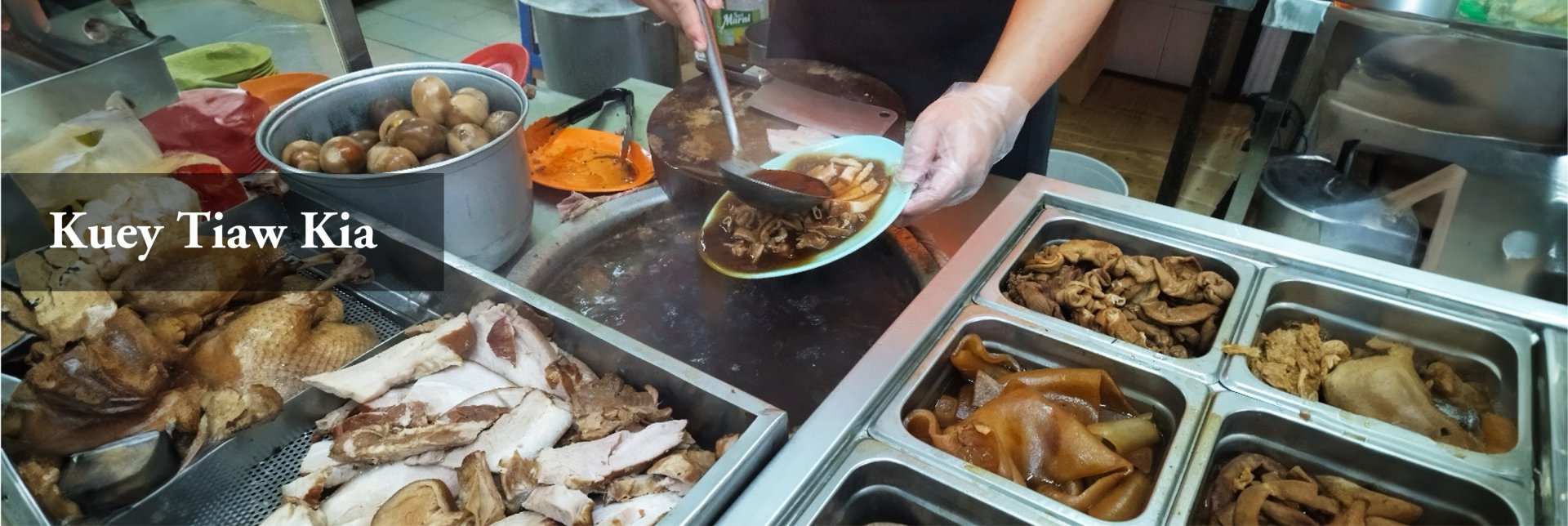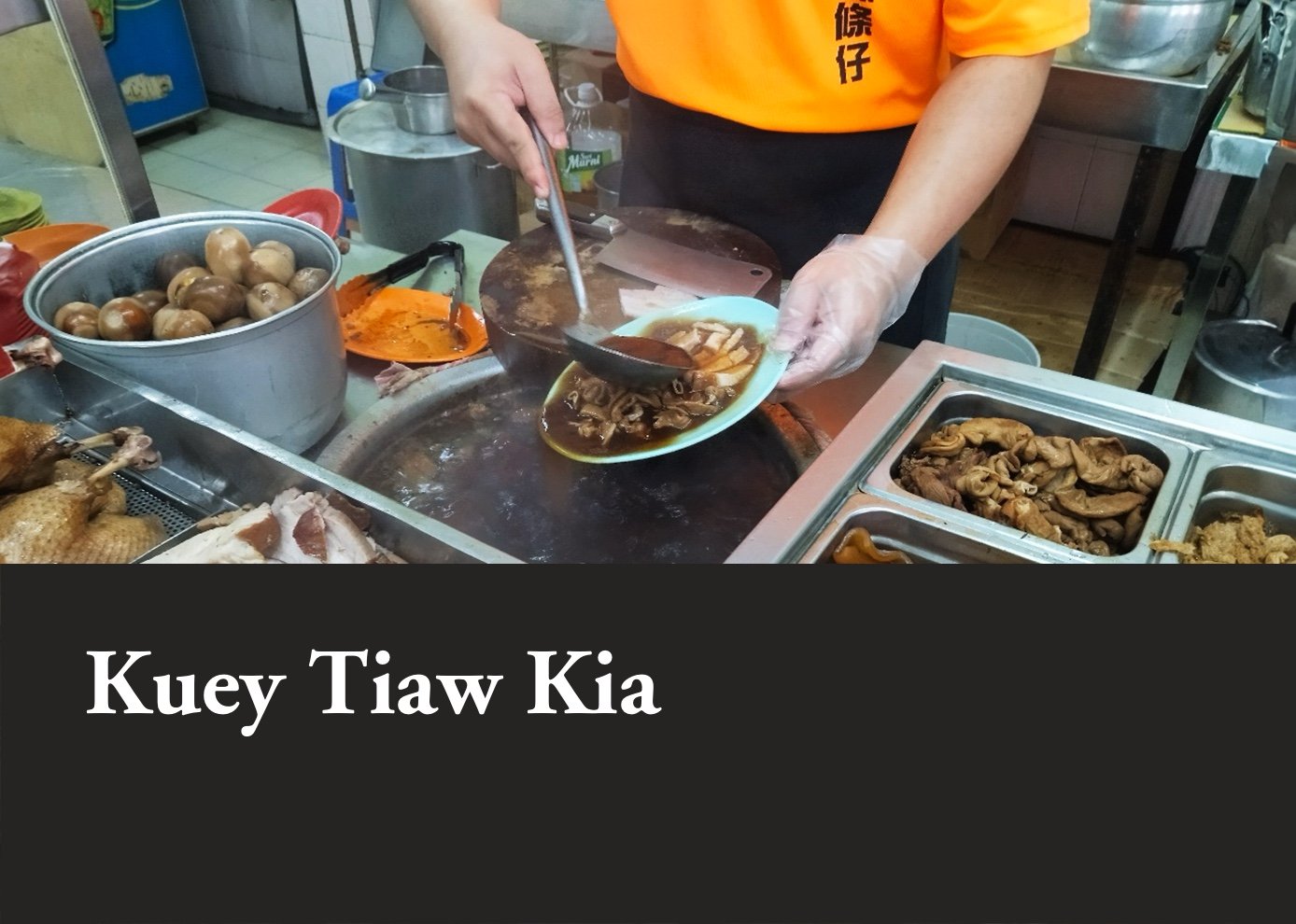Kuey Tiaw Kia
In Johor Bahru, the capital of Johor, Malaysia, there exists a snack called the Kuey Tiaw Kia (粿條仔). It’s a unique snack that, even for aficionados of Chinese cuisine, strikes a balance between the familiar and the novel.

In the Johor Bahru Chinese dialect, “Kuey Tiaw Kia” is articulated in the Teo-Swa (潮汕) dialect. It refers to a type of noodle, thinner and flatter than the typical Kuey Tiaw. More than just a noodle, it represents the city’s bond with Teo-Swa immigrants and their rich culinary past. Though the city was officially established in 1855, Teochew (潮州) settlers had been active in regions like the Riau Archipelago, Singapore, and southern Johor long before. Their activities ranged from sailing ship trading to forming influential community organizations, with a particular focus on Gambir plantations. Located just a short distance from Singapore, Johor Bahru naturally became a hotspot for Teochew immigrants, often referred to as “Little Swatow (小汕頭).” As a result, the characteristics of Teo-Swa cuisine have been somewhat preserved in the flavors of this bustling border town. Teochew dishes, from porridge and steamed fish to braised duck and an assortment of traditional cakes, have firmly rooted themselves here.

While this cultural backdrop paved the way for Kuey Tiaw Kia’s introduction to Johor Bahru, its true origin is quite recent. Legend has it that a Teochew immigrant from Guanchao (鹳巢乡), Zhang Zhenghe (張正和), known by the nickname “Ah Dan (阿蛋)”, began crafting and selling Kuey Tiaw Kia in the city shortly after World War II. He would drizzle a pre-prepared, dark, and richly flavored braising sauce over the briefly boiled noodles, accompanied by side dishes of braised pork innards, tofu, and eggs. This methodology set the standard for Johor Bahru’s take on Kuey Tiaw Kia. Eventually, a tangy chili sauce was introduced as the preferred dip for the braised dishes, lending the Kuey Tiaw Kia a Southeast Asian zest.

Keen observers might recognize the preparation’s similarity to another Teochew dish, “Kway Chap”. The main distinction is the shape; while Kway Chap employs flat pieces, Kuey Tiaw Kia is characterized by its thin strips. This subtle change offers a significant difference in both taste and texture. Preparing the traditional “Kway Chap” involves adding and stirring a rice batter during the cooking process. Once it’s ready to be served in a bowl, it’s then topped with a flavorful braising sauce. This combination resembles the consistency of Teochew porridge. On the other hand, Kuey Tiaw Kia only requires a quick blanching until tender, making it a faster dish to whip up. The broth added to the “Kuey Tiaw Kia” bowl is pre-mixed with a braising sauce, offering a flavor and mouthfeel that sets it apart from the traditional “Kway Chap”.
For many in Johor Bahru, Kuey Tiaw Kia was once a delightful and affordable treat. Given the early days’ low-cost ingredients such as pork innards, tofu, and chicken eggs, coupled with its quick preparation time and flavor savory and rich broth, it became irresistibly appetizing. You could endlessly indulge in bowl after bowl of Kuey Tiaw Kia, even without any accompaniments. With its blend of convenience, rich flavors, cost-effectiveness, and hearty nature, it quickly became a favorite among both locals and travelers, earning its spot as one of Johor Bahru’s signature street snacks.
All articles/videos are prohibited from reproducing without the permission of the copyright holder.




Welcome to leave a message:
Please Sign In/Sign Up as a member and leave a message